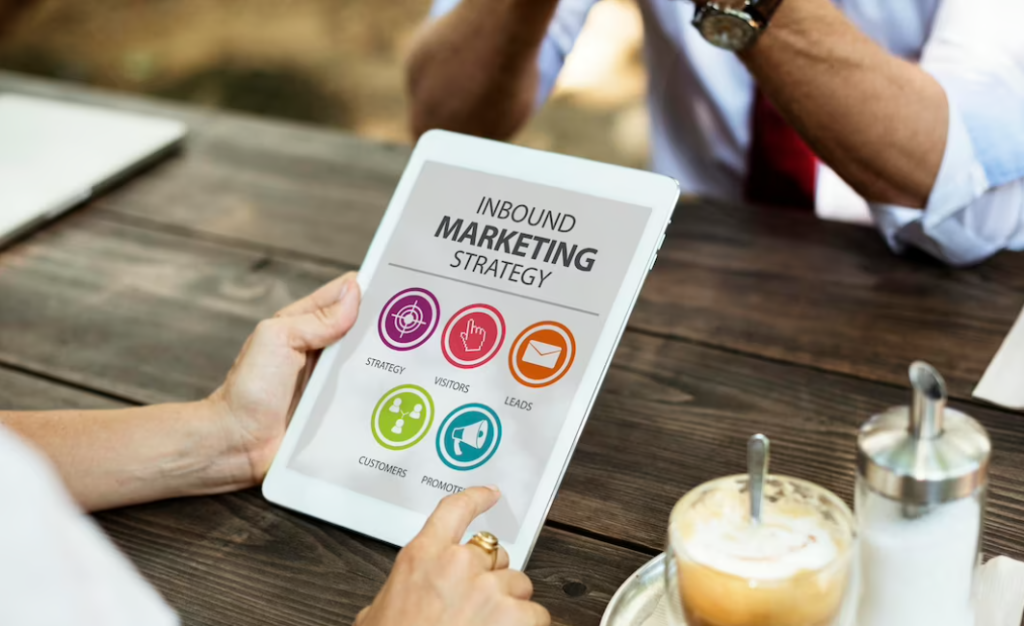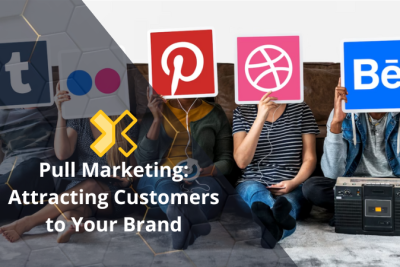
Push Marketing: Proactive Promotion to Target Audience

Push marketing is a proactive strategy used to engage target audiences. Unlike traditional marketing, which requires customers to actively seek out a company's products or services, push marketing seeks to promote products or services directly to the customer. The aim is to generate immediate interest and encourage purchase, through various promotional campaigns.
- What is Push Marketing?
- Benefits of Push Marketing
- Push Marketing vs. Pull Marketing
- Key Components of a Push Marketing Campaign
- Targeted Push Marketing for Customer Outreach
- Push Advertising for Increased Brand Visibility
- Utilizing Mass Communication in Push Marketing
- Measuring the Success of Push Marketing
- Examples of Successful Push Marketing Campaigns
- Conclusion
What is Push Marketing?
Push marketing, also known as direct or outbound marketing, is a proactive promotional strategy that involves delivering promotional messages to a target audience to generate leads and sales. This approach uses a range of marketing tactics—including advertising, sales promotions, and personal selling—to push or promote products or services to potential customers.
The primary aim of push marketing is to increase brand visibility and promote sales, often by reaching out to customers through various marketing channels such as email, social media, telemarketing, or direct mail. The primary goal is to stimulate interest in a product or service and generate leads and sales.
Push marketing is often contrasted with pull marketing, a strategy that focuses on attracting customers to a brand or product organically. Pull marketing is typically associated with content marketing, social media marketing, and search engine optimization (SEO), which are designed to attract and engage customers by providing valuable information or entertainment.
Benefits of Push Marketing
Push marketing is a valuable promotional strategy employed by businesses to raise brand awareness and promote sales. By utilizing direct communication and promotional tactics, push marketing can have a significant impact on the success of a business. Below are the key benefits of implementing push marketing strategies:
- Brand promotion: Push marketing allows businesses to promote their brand to a targeted audience effectively. By using direct communication channels such as email marketing, SMS, or targeted advertising, businesses can raise awareness of their brand and build a loyal customer base.
- Sales promotion: Push marketing can be an effective way of promoting sales and deals to customers. By using targeted advertising or email campaigns, businesses can reach specific customers who are more likely to make a purchase. This can help to increase sales and revenue.
- Effective communication: Push marketing enables businesses to communicate effectively with their customers. By using direct channels such as email or SMS, businesses can provide customers with important updates or information, which can help to build trust and increase customer loyalty.
- Immediate impact: Push marketing strategies can have an immediate impact on the target audience. By using targeted advertising or email campaigns, businesses can quickly reach their intended audience and generate interest in their products or services.
Overall, push marketing can be an effective promotional tactic for businesses looking to build brand visibility and increase sales. By using targeted communication channels and promotional strategies, businesses can reach their intended audience quickly and effectively.
Push Marketing vs. Pull Marketing

Push marketing is often compared and contrasted with pull marketing, which is a more passive form of promotion. While push marketing focuses on direct, proactive communication with the target audience, pull marketing aims to attract potential customers to the business by creating an enticing brand image and reputation.
Whereas push marketing is typically associated with direct marketing and outbound marketing techniques, pull marketing is more closely aligned with inbound marketing strategies that rely on search engine optimization and content marketing to draw customers in.
Push Marketing
| Direct Marketing Techniques | Outbound Marketing Strategies |
|---|---|
| Cold Calling | Telemarketing |
| Email Marketing | Direct Mail Marketing |
| Sales Promotions | Advertising Campaigns |
Pull Marketing
- Search Engine Optimization
- Content Marketing
- Social Media Marketing
While both push and pull marketing have their strengths and weaknesses, businesses that want to actively engage their target audience with direct selling and promotional campaigns will often opt for push marketing strategies. On the other hand, businesses looking to establish a trusted and appealing brand identity may choose to focus more on pull marketing techniques.
Key Components of a Push Marketing Campaign
Effective push marketing campaigns require a well-executed plan that incorporates multiple components. From understanding the target audience to selecting the right advertising tactics, a successful push marketing campaign must consider several key factors to achieve its objectives. Here are some of the crucial components:
| Advertising Techniques | Promotional Strategies |
|---|---|
| Direct Mail: Sending postcards, flyers, or other promotional materials directly to the target audience. | Contests and Giveaways: Offering incentives to encourage potential customers to take action. |
| Email Marketing: Sending email messages to potential customers to promote products and services. | Product Demos: Offering product demonstrations to showcase the features and benefits of a product or service. |
| Social Media Advertising: Promoting products and services on social media platforms like Facebook, Instagram, and Twitter. | Discounts and Coupons: Offering discounts or coupons to incentivize customers to make a purchase. |
Aside from these advertising and promotional techniques, a comprehensive push marketing campaign must also consider the following:
- Target Audience: Identifying and understanding the target audience to create tailored messaging and promotions that resonate with them.
- Budget: Allocating budget for advertising, promotional materials, and other associated costs.
- Timeline: Determining a timeline for the campaign that aligns with promotional objectives, seasonality, and other relevant factors.
- Metrics: Defining key performance indicators (KPIs) and metrics to track the effectiveness of the campaign, such as customer acquisition, conversion rates, and return on investment (ROI).
By incorporating these components, a push marketing campaign can effectively target the right audience and promote products or services in a proactive manner, ultimately driving sales and increasing brand visibility.
Targeted Push Marketing for Customer Outreach
In order to create an effective push marketing campaign, it is essential to focus on targeted marketing for effective customer outreach. By targeting a specific audience, businesses can create tailored promotional content and messaging that resonates with their potential customers.
One important aspect of targeted push marketing is to identify the key characteristics of the target audience, such as demographics, interests, and behavioral patterns. With this information, businesses can develop targeted marketing strategies to reach their potential customers through the most appropriate channels.
Effective channels for targeted push marketing campaigns may include email marketing, social media advertising, or targeted direct mail campaigns. It is essential to choose the right channel to maximize the impact of targeted marketing campaigns.
Another important component of targeted push marketing is to personalize the marketing message to ensure that it resonates with the customer. By using personalized messaging and content, businesses can create a one-to-one connection with their target market that is more likely to drive conversions and sales.
Overall, targeted push marketing is essential for effective customer outreach. By understanding the characteristics of the target audience and tailoring marketing strategies to their needs and preferences, businesses can create successful push marketing campaigns that drive sales and promote business growth.
Push Advertising for Increased Brand Visibility
Push advertising is an effective strategy for increasing brand visibility and promoting products or services directly to potential customers. By utilizing targeted advertising techniques and promotional campaigns, companies can reach their target audience quickly and efficiently.
The key to successful push advertising is to use effective advertising strategies that grab attention and remain memorable. These strategies include creating compelling ads, using eye-catching visuals, and emphasizing the product or service's unique benefits.
In addition to traditional advertising methods, push advertising can also be achieved through social media ads, email marketing, and other forms of digital marketing. These methods allow for precise targeting and personalized messaging, increasing the effectiveness of push advertising campaigns.
Ultimately, push advertising can lead to increased brand recognition and awareness, as well as higher sales and customer acquisition. By utilizing targeted marketing techniques and effective advertising strategies, companies can successfully implement push advertising as a key component of their overall marketing strategy.
Utilizing Mass Communication in Push Marketing

Mass communication is an essential component of push marketing campaigns, as it allows businesses and organizations to reach a large audience quickly. By utilizing various advertising techniques, such as television, radio, and print media, businesses can effectively promote their products or services to the masses.
One effective advertising technique is to leverage the power of endorsements. Partnering with a well-known celebrity or influencer can help to increase brand visibility and build credibility. For instance, a skincare brand may collaborate with a popular beauty influencer to promote their latest product, resulting in increased sales and customer acquisition.
| Advertising Technique | Definition | Example |
|---|---|---|
| Direct Mail | Sending promotional materials directly to a target audience's mailbox | A fashion retailer sends a catalog featuring their latest collection to their mailing list |
| Television Advertising | Airing commercials on television during popular shows or events | A fast food chain advertises their latest menu item during the Super Bowl |
| Radio Advertising | Promoting products or services through radio commercials | A car dealership advertises their latest sales event during a morning commute radio show |
Another effective technique is to utilize digital platforms such as social media and email marketing. Social media platforms are a valuable tool for businesses to engage their target audience, as they allow for direct communication and feedback. Similarly, email marketing campaigns can reach a large number of people quickly and effectively, increasing brand visibility and customer acquisition.
"Mass communication is an essential tool for businesses to promote their products or services to a wide audience quickly and effectively."
Effective Advertising Strategies
While mass communication can be a powerful tool, it is important to develop effective advertising strategies to maximize its impact. For instance, businesses should ensure that their messaging is clear and concise, and that their branding is consistent across all advertising channels. Additionally, it is crucial to measure the success of advertising campaigns, using metrics such as customer acquisition and sales figures to determine the effectiveness of the campaign.
Ultimately, the key to utilizing mass communication in push marketing campaigns is to effectively leverage a variety of advertising techniques and strategies, while ensuring that messaging is clear and consistent, and that success is measured and analyzed.
Measuring the Success of Push Marketing
Measuring the success of a push marketing campaign is crucial to evaluating its effectiveness in terms of customer acquisition and promotion. There are several metrics that companies can use to track the success of their push marketing activities.
Customer Acquisition Cost (CAC)
CAC is the estimated cost of acquiring a new customer. It is calculated by dividing the total cost of the marketing promotion by the number of customers acquired. A lower CAC indicates a more efficient push marketing campaign.
Conversion Rate
Conversion rate is the percentage of people who take a specific action, such as making a purchase or filling out a form, after being exposed to a push marketing message. A higher conversion rate is an indicator of a successful push marketing campaign.
Return on Investment (ROI)
ROI is the ratio of the net profit generated by a marketing promotion to the cost of that promotion. A higher ROI indicates a more successful push marketing campaign.
Brand Awareness and Engagement
Measuring brand awareness and engagement can also be a useful way to evaluate the success of a push marketing campaign. This can be done through surveys, social media analytics, and website traffic analysis. An increase in brand awareness and engagement is a positive indicator for a push marketing campaign.
By analyzing these metrics, companies can track the success of their push marketing campaigns and make data-driven decisions on how to optimize their promotional activities.
Examples of Successful Push Marketing Campaigns
Here are some real-life examples of successful push marketing campaigns:
| Company | Campaign Name | Description |
|---|---|---|
| Apple | iPhone Launch | Apple creates excitement for their new iPhone release by sending out press releases, hosting launch events, and promoting the product on social media. |
| Nike | Just Do It | Nike's "Just Do It" campaign uses celebrity endorsements, social media, and targeted advertising to promote their brand and products. |
| Coca-Cola | Share a Coke | Coca-Cola's "Share a Coke" campaign personalized their product by printing popular names on their bottles, creating buzz and a sense of exclusivity. |
Each of these campaigns utilized targeted advertising and promotional strategies to engage their audience and drive sales. By using push marketing techniques, these companies were able to create a sense of urgency and demand for their products.
Conclusion
Push marketing is a proactive promotional strategy that engages the target audience. It is an effective way to increase brand visibility, sales promotion, and customer acquisition. By comparing and contrasting push marketing with pull marketing, we understand that push marketing is a direct and proactive approach to advertising. To run a successful push marketing campaign, it is crucial to have the right components in place, including advertising techniques and promotional strategies.
Targeted marketing plays a crucial role in push marketing for effective customer outreach. Push advertising can enhance brand visibility and increase brand awareness. Utilizing mass communication in push marketing campaigns can have a substantial impact on customer acquisition. Measuring the success of your push marketing campaign is essential to determining its success rate, and it also helps in identifying areas of improvement.
Examples of Successful Push Marketing Campaigns
There are several real-life examples of successful push marketing campaigns that focus on targeted advertising and promotional strategies. A notable one is Coca-Cola's "Share a Coke" campaign, where they printed popular names on their cans and bottles to encourage consumers to purchase and share them with friends and family. This push marketing campaign resulted in an increase in sales and boosted brand visibility.
Another example is Red Bull's "Stratos" campaign, where they sponsored Felix Baumgartner's skydive from space. The push marketing strategy aimed to show that Red Bull gave you the energy to do anything you wanted, no matter how extreme. The campaign generated a significant amount of buzz and increased brand awareness.
These examples illustrate the importance of targeted advertising and creative promotional strategies in push marketing campaigns.
Push marketing is an effective advertising strategy that can increase brand visibility, sales promotion, and customer acquisition. Incorporating targeted advertising and creative promotional strategies can help ensure the success of push marketing campaigns. So, go ahead and give it a try if you want to achieve effective direct selling.
If you want to know other articles similar to Push Marketing: Proactive Promotion to Target Audience you can visit the category MARKETING.
Leave a Reply






It may interest you...